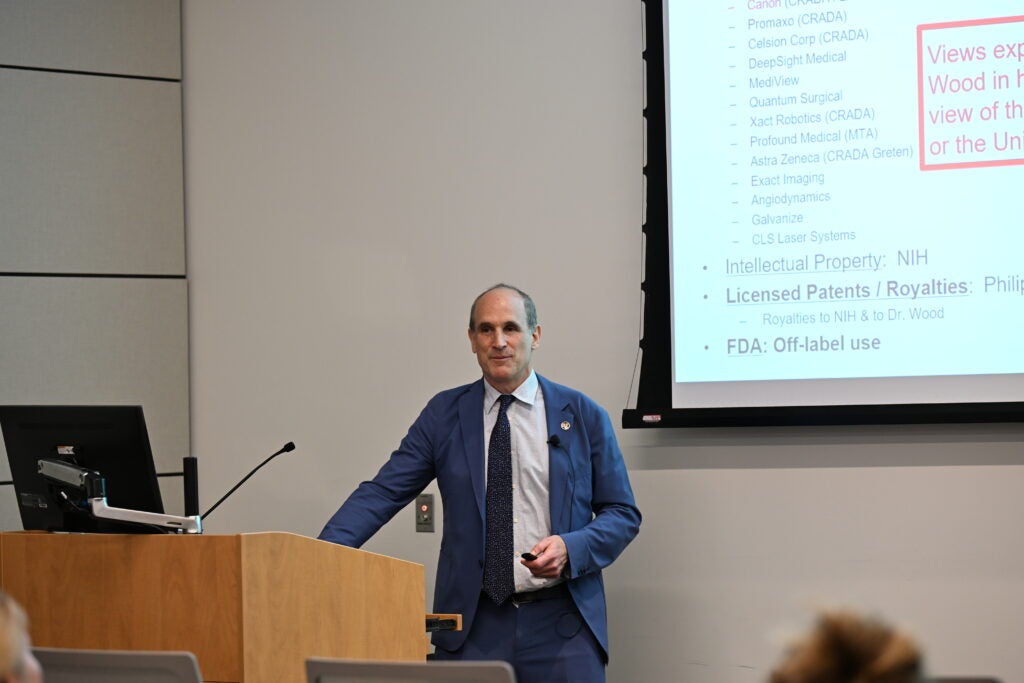Video Game Medicine and Translational Team Science: Devices + Drugs + Image Guidance + Robots + AI
Brad Wood, MD, FSIR
April 17, 2025
UVA Radiology & Medical Imaging presents the 16th Annual Tegtmeyer Lecture, titled: “Video Game Medicine and Translational Team Science: Devices + Drugs + Image Guidance + Robots + AI.”
The talk was delivered by Brad Wood, MD, FSIR, who serves as chief of interventional radiology at the National Institutes of Health and is the founding director of the NIH Center for Interventional Oncology. Dr. Wood also holds positions in the National Institute for Biomedical Imaging and Bioengineering’s Center for Biomedical Engineering Technology Acceleration and the National Cancer Institute’s Center for Cancer Research. He is also an adjunct professor of biomedical engineering at the University of Maryland.
The lecture was held on Thursday, April 17, 2025 at 5 p.m. in the Educational Resource Center on the 2nd Floor, Auditorium A.
The Tegtmeyer Endowed Lectureship was established in 2009 to honor Charles J. “Tunk” Tegtmeyer. In addition to an annual lecture, the project supports scholarly and educational activities for trainees and initiatives dedicated to the advancement of interventional radiology.
Watch previous lectures from this series.

About the Lecturer — Brad Wood, MD, FSIR

Brad Wood, MD, FSIR is Chief of Interventional Radiology at the world’s largest hospital dedicated to clinical research; founding Director of the NIH Center for Interventional Oncology (CIO), a diverse multi-disciplinary team that develops and translates devices, software, and navigation approaches for cancer via public-private-academic partnerships to address unmet clinical needs; and Adjunct Professor of Biomedical Engineering at the University of MD. He has been NIH funded for decades & has many commercialized inventions, >50 patents, >675 peer-reviewed papers, ~47,500 citations, H-index 112, including NEJM, JAMA, Nature Medicine, and Science. He leads numerous industry partnerships, and invented fusion-guided biopsy and ablation, now standard of care in millions of prostate biopsies per year. His teams’ “1st in human” include: RFA for kidney cancer, pheo, & adrenal cancer, electromagnetic tracking for fusion of ultrasound to CT, MR and PET for biopsy and ablation, ablation or embolization with checkpoint inhibition for immunomodulation in HCC, MR/transrectal ultrasound fusion biopsy for prostate cancer, image-able drug-eluting beads for TACE, prostate fusion interventions totally outside of the rectum, and smartphone augmented reality for IR.

Comments